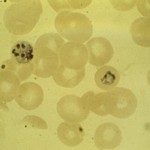Link to Pubmed [PMID] – 38517359
Link to DOI – 10.1002/mp.17036
Med Phys 2024 Mar; ():
This study addresses the technical gap between clinical radiation therapy (RT) and preclinical small-animal RT, hindering the comprehensive validation of innovative clinical RT approaches in small-animal models of cancer and the translation of preclinical RT studies into clinical practices.The main aim was to explore the feasibility of biologically guided RT implemented within a small-animal radiation therapy (SART) platform, with integrated quad-modal on-board positron emission tomography (PET), single-photon emission computed tomography, photon-counting spectral CT, and cone-beam CT (CBCT) imaging, in a Monte Carlo model as a proof-of-concept.We developed a SART workflow employing quad-modal imaging guidance, integrating multimodal image-guided RT and emission-guided RT (EGRT). The EGRT algorithm was outlined using positron signals from a PET radiotracer, enabling near real-time adjustments to radiation treatment beams for precise targeting in the presence of a 2-mm setup error. Molecular image-guided RT, incorporating a dose escalation/de-escalation scheme, was demonstrated using a simulated phantom with a dose painting plan. The plan involved delivering a low dose to the CBCT-delineated planning target volume (PTV) and a high dose boosted to the highly active biological target volume (hBTV) identified by the 18F-PET image. Additionally, the Bayesian eigentissue decomposition method illustrated the quantitative decomposition of radiotherapy-related parameters, specifically iodine uptake fraction and virtual noncontrast (VNC) electron density, using a simulated phantom with Kidney1 and Liver2 inserts mixed with an iodine contrast agent at electron fractions of 0.01-0.02.EGRT simulations generated over 4,000 beamlet responses in dose slice deliveries and illustrated superior dose coverage and distribution with significantly lower doses delivered to normal tissues, even with a 2-mm setup error introduced, demonstrating the robustness of the novel EGRT scheme compared to conventional image-guided RT. In the dose-painting plan, doubling the dose to the hBTV while maintaining a low dose for the PTV resulted in an organ-at-risk (OAR) dose comparable to the low-dose treatment for the PTV alone. Furthermore, the decomposition of radiotherapy-related parameters in Kidney1 and Liver2 inserts, including iodine uptake fractions and VNC electron densities, exhibited average relative errors of less than 1.0% and 2.5%, respectively.The results demonstrated the successful implementation of biologically guided RT within the proposed quad-model image-guided SART platform, with potential applications in preclinical RT and adaptive RT studies.

